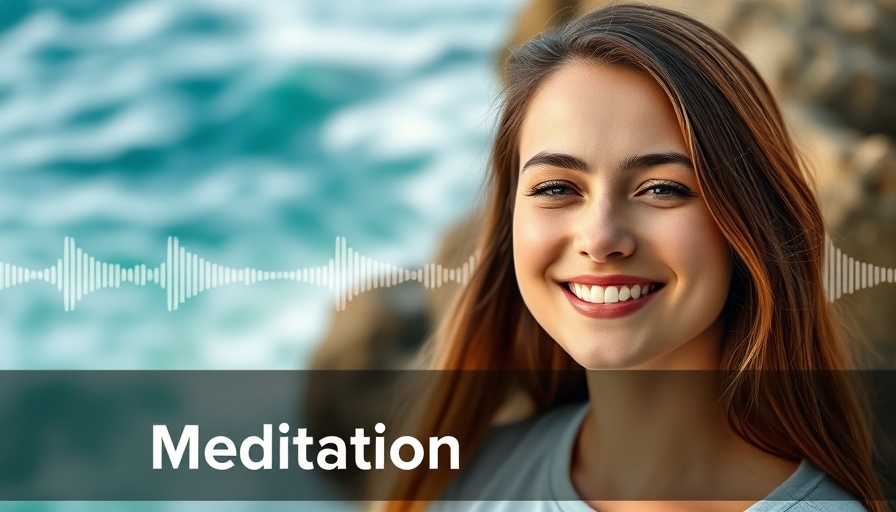
Finding Your Inner Strength Through Guided Meditation
In today's fast-paced world where uncertainty is common, creating an anchor of inner strength is more essential than ever. Guided practices like Melli O’Brien's meditation not only foster resilience but also offer a space for individuals to reconnect with their innate sense of calm and gratitude.
What Does Inner Strength Feel Like?
Imagine standing firm like a tree during a storm—it’s about recognizing your roots, your truths, and your support system. In the guided practice, participants are encouraged to discover feelings of gratitude, as cultivating thankfulness can be a powerful gateway to inner fortitude. As you breathe deeply, notice how gratitude lights up your body, evoking sensations of warmth and assurance.
Creating a Safe Space
When starting your meditation, it's vital to find a comfortable and quiet space where distractions are minimal. The physical setting can play a crucial role in how effectively you can tap into your inner strength. Get cozy, perhaps with a favorite blanket or a cup of herbal tea, and remember that this time is for you. As emphasized in O’Brien's meditation, closing your eyes and focusing on your breath serves as a natural way to anchor yourself in the present moment.
Embracing Gratitude: A Future Insight
Practicing gratitude isn’t just a feel-good exercise; research shows that it can lead to improved mental health, increased resilience, and strengthened relationships. As you meditate, think about persons or experiences that have positively impacted your life. Picture the golden light of gratitude filling you up, permeating every fiber of your being. This vision can help you reassess challenges, transforming difficult moments into opportunities for strength and growth.
The Power of Calm Among Chaos
Often, our minds can be our greatest adversaries, clouded by stressful thoughts. Finding calm amidst chaos isn't just about clearing your schedule; it’s about training your mind to seek peace. Visualizing serene spaces, like beaches during sunset or tranquil forests, can aid in this journey. Such images evoke feelings of relaxation and balance, allowing you to better confront your daily challenges.
Building Rituals: Actionable Insights for Everyday Life
Integrating the lessons from this meditation into everyday life creates profound changes, ensuring you carry that anchor of strength with you. Develop a morning ritual where you set an intention for gratitude and calm—whether it's through journal writing or a simple affirmation. Small daily rituals reinforce the idea that inner peace is not a destination but rather a continuous journey.
Combating Misconceptions: Inner Strength is Not Invulnerability
Many individuals mistake inner strength for being tough or unshakeable. However, true inner strength acknowledges vulnerability and openness. Embracing your feelings, whether fear, anxiety, or joy, allows for a more profound understanding of your emotional landscape. When you allow yourself to feel deeply, the process of healing and strengthening begins.
Frequently Asked Questions About Inner Strength and Meditation
Q1: How often should I practice meditation to build inner strength?
It's most beneficial to integrate meditation into your routine regularly. Even 5-10 minutes daily can yield remarkable effects over time.
Q2: Can guided meditation really aid in creating inner strength?
Absolutely! Guided meditations provide a structured approach that can help you focus on your feelings and encourage deeper introspection.
By embracing these practices, we can cultivate a solid foundation against life's uncertainties, transforming our approach to challenges. Remember, every moment spent in reflection adds to your reservoir of inner strength. As you embark on this journey, be sure to take the lessons learned in meditation into your daily life, allowing them to shape you into a more resilient individual.
If you’re interested in building a more resilient mindset and want to learn more about meditation and wellness practices, take the time to explore courses and resources that can guide you further. The journey of inner strength is continuous—start today!
 Add Row
Add Row  Add
Add 




Write A Comment